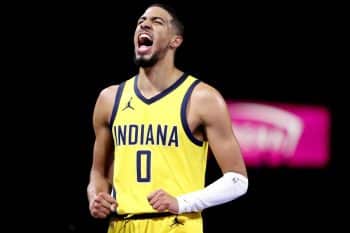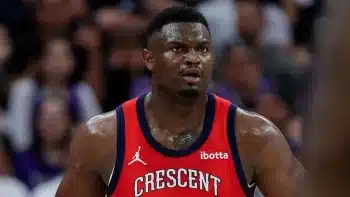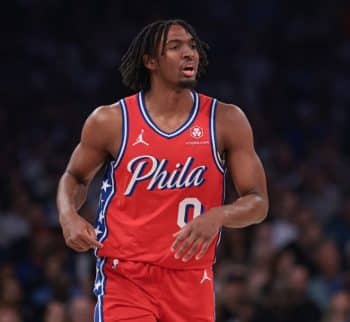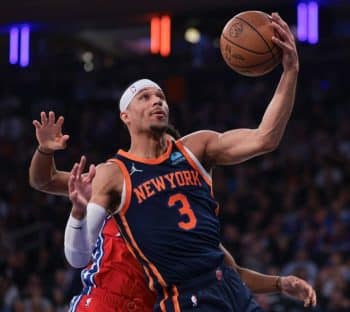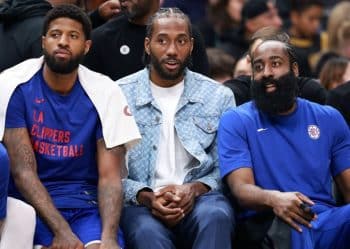NBA
NBA Saturday: Three-Point Shooting and Championships

Over the last several years, NBA players and teams have put an increasing amount of value on three-point shooting. This development comes at a time when teams are either learning to embrace advanced analytics, or have already been utilizing it for years. No matter how much any single team either uses or does not use advanced analytics, one of the things that is commonly understood is that three-pointers (especially corner three-pointers) are one of the most efficient shots in basketball and consequently is a major weapon for most modern NBA offenses.
However, on Friday, Los Angeles Lakers head coach Byron Scott made headlines when he gave his opinion about the importance of three-pointers.
“You’ve got a lot of teams that just live and die by it,” Scott said on Friday. “Teams, general managers, coaches, they kind of draft that way to try to space the floor as much as possible. But you have to have shooters like that; you also have to have guys that can penetrate and get to the basket, because that opens up the floor.”
“I don’t believe it (three-pointers) wins championships,” Scott said. “[It] gets you to the playoffs.”
Scott’s opinion runs contrary to that of many NBA front office executives who have put more stock in analytics over the last several years. Teams like the Houston Rockets have formulated offensive systems that emphasize floor-spacing and shooting three-pointers, while avoiding mid-range jumpers and long two-point field goals as much as possible.
Putting Scott’s contention to the test, here we take a look at the last 10 NBA championship teams to determine what kind of role three-point shooting played for each team and whether a modern NBA team can win a championship without shooting a heavy dose of three-pointers*:
2014: San Antonio Spurs
Regular Season: 1,757 3PA (16th); 698 3PM (12th); 21.4 per game; 39.7 percent (1st)
Playoffs: 496 3PA (1st); 203 3PM (1st); 21.6 per game; 40.9 percent (1st)
2013: Miami HEAT
Regular Season: 1,809 3PA (6th); 717 3PM (3rd); 22.1 PG; 39.6 percent (2nd)
Playoffs: 465 3PA (1st); 177 3PM (1st); 20.2 PG; 38.1 percent (2nd)
2012: Miami HEAT
Regular Season: 1,030 3PA (23rd); 370 3PM (20th); 15.6 PG; 35.9 percent (10th)
Playoffs: 452 3PA (1st); 157 3PM (1st); 19.7 PG; 34.7 percent (5th)
2011: Dallas Mavericks
Regular Season: 1,768 3PA (5th); 645 3PM (8th); 21.6 PG; 36.5 (11th)
Playoffs: 467 3PA (1st); 184 3PM (1st); 22.2 PG; 39.4 percent (2nd)
2010: Los Angeles Lakers
Regular Season: 1,562 3PA (10th) 3PM; 532 3PM (13th); 19 PG; 34.1 percent (13th)
Playoffs: 476 3PA (1st); 157 3PM (1st); 20.7 PG; 33 percent (11th)
2009: Los Angeles Lakers
Regular Season: 1,516 3PA (15th); 547 3PM (17th); 18.5 PG; 36.1 percent (19th)
Playoffs: 424 3PA (2nd); 160 3PM (2nd); 18.4 PG; 37.7 percent (4th)
2008: Boston Celtics
Regular Season: 1,564 3PA (12th); 596 3PM (23rd); 19.1 PG; 38.1 percent (8th)
Playoffs: 417 3PA (1st); 137 3PM (2nd); 16.9 PG; 32.9 percent (13th)
2007: San Antonio Spurs
Regular Season: 1,561 3PA (7th); 595 3PM (6th); 19 PG; 38.1 percent (3rd)
Playoffs: 393 3PA (1st); 151 3PM (1st); 19.7 PG; 38.4 percent (1st)
2006: Miami HEAT
Regular Season: 1,441 3PA (12th); 497 3PM (13th); 17.6 PG; 34.5 percent (20th)
Playoffs: 439 3PA (2nd); 146 3PM (2nd); 19.1 PG; 33.3 percent (8th)
2005: San Antonio Spurs
Regular Season: 1,395 3PA (13th); 507 3PM (12th); 17 PG; 36.3 percent (8th)
Playoffs: 422 3PA (1st); 164 3PM (1st); 18.3 PG; 38.9 percent (4th)
After looking at this data, it seems pretty clear that Scott’s comments are off-base. Scott said that shooting three-pointers can get you to the playoffs, but it won’t win championships. But the data above shows that only the 2007 Spurs, 2011 Mavericks and 2013 HEAT were top-10 in three pointers attempted during the regular season. Of course, there are several teams that made it to the playoffs over the last 10 years in large part because of heavy three-point shooting (like the Phoenix Suns), but the idea that three-pointers are not important in the postseason is fundamentally incorrect. If anything, three-pointers become even more important in the postseason. Consider that seven of the last 10 championship teams increased their per game three-point field goals once they got to the playoffs, showing a heightened dependence and emphasis on three-pointers in postseason play.
What is also significant is that the data shows that shooting three-pointers is inherently more important than making three-pointers at an elite percentage. Out of these 10 championship teams, only four of them ranked either first or second in three-point percentage in the postseason, while all of them ranked (in some variation) either first or second in three-pointers attempted and three-pointers made. This is somewhat misleading in that teams that make it to the NBA Finals have more games to shoot three-pointers, which in part explains why all of these teams rank either first or second in three-point field goals attempted. Nevertheless, out of these 10 teams, the lowest amount of three-pointers taken per game was 16.9 by the 2008 Boston Celtics. Yet Scott says he wants the Lakers to shoot around 10-15 three-pointers per game. If the Lakers’ preseason results so far are any indication, this could be another long season for Lakers fans.
Over their first four preseason games, the Lakers have gone 1-3 and shot 6-of-29 from beyond-the-arc. In their one and only win, the Lakers shot 5-of-10 from three-point range, and beat the Nuggets 98-95. Since that game, the Lakers have made 1-of-19 three-point field goals, and have routinely been blown out. Most disconcerting is that in the Lakers’ last two preseason games (where they lost by a collective 74 points), the team shot 95 mid-range field goals and just eight three-pointers.
Looking at recent NBA history, and considering these sort of early results for the Lakers, makes it hard to understand how Scott can believe that three-pointers are not a crucial part of running an effective NBA offense. Hopefully when players like Steve Nash, Xavier Henry, Ryan Kelly and Nick Young are healthy, the Lakers’ nightly shot charts will include more three-point attempts. But for now, Scott is taking away one of the few things that the Lakers did well last year as the Lakers made the fifth most three-pointers per game last season (9.4) and were third in three-point percentage (38.1 percent). Taking away that weapon could spell disaster for a Lakers team that projects to be well below the league average defensively.
Of course, the Lakers aren’t really contending for a championship this year, so Scott’s suppression of three-point shooting ultimately doesn’t really matter this season. But if and when the Lakers put together a roster with championship level talent, Scott’s insistence on avoiding three-pointers really could be, based on the data above, the difference between winning or losing a championship. Scott may disagree, but the data speaks for itself.
Larry Sanders Undergoes Surgery; Targets Opening Night Return
Milwaukee Bucks general manager John Hammond announced Friday that center Larry Sanders will miss the rest of the preseason after undergoing minor surgery. Prior to this announcement, Sanders sat out Tuesday’s loss to the Cleveland Cavaliers because of what the team termed an illness.
Sanders is looking to have a bounce-back season after a disappointing 2013-14 campaign. Last season, Sanders got into a bar fight, suffered a thumb injury, and later in the season suffered an orbital bone fracture and only played in 23 games.
